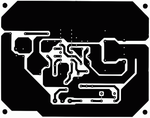neazoi
Advanced Member level 6
High I need a sinusoidal ef power generator circuit operating in class-E (for high efficiency) in the range of 35-100KHz 5-30W or so.
just a power oscillator, not a generator followed by an audio amplifier.
Any propositions?
just a power oscillator, not a generator followed by an audio amplifier.
Any propositions?
